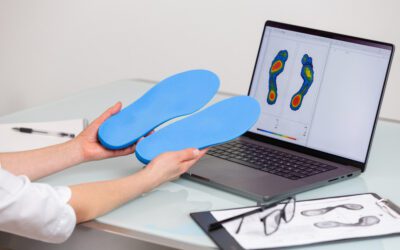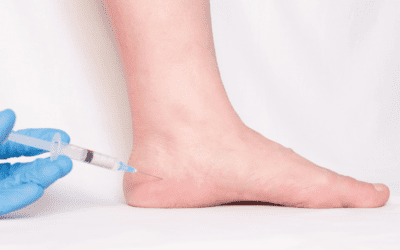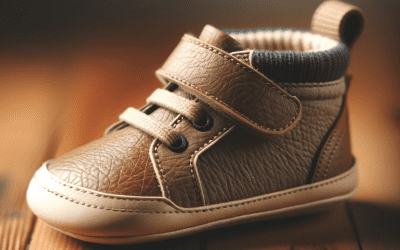Plantar warts, a scourge as old as medicine itself, continue to trouble those afflicted by them.
Caused by the human papillomavirus (HPV), these skin lesions, although generally benign, can cause significant discomfort.
To understand their nature, a look at skin anatomy is warranted. The skin, our largest organ, is composed of several layers, with the epidermis being the outermost. It is in this layer that plantar warts take root, often under the constant pressure of the feet, leading to their characteristic appearance.
The history of plantar warts dates back to antiquity, where various methods, sometimes mystical, were employed for their treatment. Today, thanks to an increased understanding of their viral cause and the mechanisms of infection, treatment approaches have evolved. However, the pain and discomfort they cause remain constant challenges.
The impact of these warts on foot health cannot be underestimated. By embedding themselves in the epidermis, the virus causes cellular proliferation, forming a thick and painful lesion.This phenomenon, coupled with their location on pressure points of the foot, makes plantar warts particularly bothersome.
In the next section, we will explore in detail the symptoms and signs of plantar warts, their potential complications, the various types of treatments available, and the crucial importance of evaluation by a podiatrist.
Symptoms and signs of plantar warts
Plantar warts often present discreetly, but their symptoms are distinct, typically, they appear as rough growths on the soles of the feet.
These lesions can be isolated or clustered, resembling cauliflower. A telltale sign of plantar warts is the presence of small black dots, which are actually coagulated blood vessels.
Unlike other types of warts, plantar warts are usually flat due to the pressure exerted on the feet while walking.
This pressure can also cause sharp pain, akin to stepping on a thorn, especially when standing on tiptoe or when squeezing the lesion between fingers. Anatomically, these warts penetrate deeper into the skin compared to common warts, explaining why they are often more painful and harder to treat.
It is crucial to distinguish plantar warts from corns and calluses, which are skin thickening without a viral origin. Plantar warts often have an irregular texture and a well-defined boundary, unlike corns, which have a smoother surface.
Potential complications
Although plantar warts are generally benign, they can lead to complications if not adequately treated. One of the most common complications is pain, which can become chronic and alter a person’s gait.
This constant pain can lead to alignment and posture issues, causing knee, hip, and back pain.
Furthermore, if a plantar wart is not correctly identified and treated, it can spread and lead to new warts, either on the feet or other parts of the body. This spread is particularly problematic in people with weakened immune systems.
It is also possible that inappropriate treatments or self-medication can cause additional skin lesions, thereby increasing the risk of secondary infections. These situations underline the importance of consulting a health professional for an accurate diagnosis and tailored treatment.
Types of treatment and evaluation by a Podiatrist
The treatment of plantar warts can vary based on their size, number, and the patient’s response to previous treatments. Options include:
Salicylic Acid: Salicylic acid is often the first treatment attempted. It is a keratolytic that gradually removes layers of the wart. This treatment is available in various forms, including patches, gels, and liquids.
Cantharidin: This substance, applied by a health professional, causes a blister under the wart, allowing the dead tissue to be removed.
Liquid Nitrogen: Cryotherapy, using liquid nitrogen, aims to freeze the wart, causing the infected cells to die. This method may require multiple sessions.
Bleomycin: Used in resistant cases, this local chemotherapy kills the virus cells.
Surgery: In extreme cases, surgery may be considered to remove warts resistant to other treatments.
Although over-the-counter treatments are available at pharmacies, it is recommended to consult a health professional before using them, especially if the wart is painful or appears to be spreading.
Evaluation by a Podiatrist
A podiatrist, a foot disorder expert, plays a crucial role in diagnosing and treating plantar warts. During the evaluation, the podiatrist examines the lesion to confirm it is indeed a plantar wart and not a corn or another foot condition. This distinction is essential because the treatment significantly differs.
The podiatrist also assesses the wart’s severity, considers the patient’s medical history, and discusses the most appropriate treatment options. In some cases, they may recommend specialized podiatric treatments not offered in pharmacies. Regular follow-ups are often necessary to ensure the treatment’s effectiveness and to adjust the care plan as needed. This personalized approach increases the chances of successful treatment and minimizes the risk of recurrence.
Spread, prevention, and practical home advice
Plantar warts primarily spread through direct contact with the human papillomavirus, often in moist environments where people walk barefoot, such as pools, public showers, and locker rooms. The virus can also spread through self-inoculation, where a person touches an existing wart and then another part of their body.
To prevent the spread of plantar warts, it is advisable to:
- Wear shoes in moist public places.
- Avoid directly touching warts, both on oneself and others.
- Maintain good foot hygiene, keeping feet dry and clean.
- Use disinfectants or antifungal sprays for shoes.
Practical home advice
In addition to preventive measures, simple actions at home can help manage plantar warts:
- Wear sandals around pools: This reduces the risk of contracting or spreading the virus.
- Use disinfectant spray for shoes: This helps eliminate the virus and prevent reinfection.
- Monitor for signs of plantar warts: Be attentive to any changes or pain in the soles of the feet, and consult a health professional if you suspect a plantar wart.
In conclusion, while plantar warts are a common foot health issue.
They require special attention to avoid painful complications and the spread of the virus. As we have seen, the symptoms of plantar warts, such as epidermal lesions with black dots, must be correctly identified to distinguish these warts from corns or other skin lesions.
Treatment options, including salicylic acid, cryotherapy, and surgical interventions, depend on the severity and the patient’s response to previous treatments.
The importance of consulting a podiatrist or another health professional cannot be understated. These experts provide an accurate diagnosis and a tailored treatment plan, thereby reducing the risk of complications and recurrence.
Additionally, prevention, particularly wearing sandals in moist public areas and maintaining good foot hygiene, remains the best defense against these infections.
This detailed guide on plantar warts aims not only to inform but also to encourage proactive foot health management. By adopting good practices and seeking professional help when necessary, it is possible to effectively manage plantar warts and maintain healthy feet.




